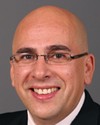Madam Speaker, I would be very happy if this debate could rise above the issue of whether funding should be cut or reinstated or whether this funding will be replaced by another program. I believe that that is not the issue.
Should the Aboriginal Healing Foundation continue to exist for a time in order to help the aboriginal peoples, the aboriginal communities, the individuals and the families affected by everything that happened in the residential schools?
I say that it should, and so do my Bloc Québécois colleagues.
I will try to explain the importance of the Aboriginal Healing Foundation to the minister and the people who are watching by giving a very specific example.
Near Amos, there is a small town named Saint-Marc-de-Figuery. An Indian residential school was set up there in the 1950s and remained open until 1963 or 1964 or maybe even a little later.
In the fall, all the Algonquins who could be found along Lake Abitibi or the railway were brought by force to the Indian residential school in Saint-Marc-de-Figuery. Terrible things went on in this school and probably in many other Indian residential schools. The government acknowledged that there had been abuses and put in place a system to help communities and individuals deal with what they had gone through.
The National Chief of the Assembly of First Nations, Shawn Atleo, is a true visionary. He said this nearly three months ago:
As we look forward we must also remember our history, and this is especially true of residential schools survivors. The resources in this do not specifically reference the Aboriginal Healing Foundation. This concerns us because the Foundation delivers critical programming to help survivors right at the community level. [Every word is important.] This work is needed now because the Truth and Reconciliation Commission is underway and survivors will be telling their often-times painful stories.
There is no better way to express the importance of preserving and renewing the funding for the Aboriginal Healing Foundation, which does a remarkable job.
I am going to explain what happened. The consequences of the forced assimilation policy, and I do say forced, of the Indian residential school scheme continue to burden the aboriginal people even today.
Many people who were in the residential schools did not have the opportunity to develop parenting skills. They had to fight against the elimination of their identity as aboriginal people, and against the disappearance of their language and culture.
Even today, generations of aboriginal people remember the trauma they suffered, the neglect, the shame and they poverty they were victims of. Thousands of former students have publicly disclosed that physical, emotional and sexual violence was endemic in the system, and that little effort was made to stem it, to punish the people committing the abuse, or to improve conditions.
The Aboriginal Healing Foundation operates, and I hope it continues to operate, in a culturally and politically complex environment, often finding itself embroiled in controversy. That being said, the foundation itself is an apolitical entity that is concerned only with healing, and it maintains excellent relations with aboriginal political organizations, aboriginal people, the government, the churches and the Canadian public in general. The foundation is considered to be a very successful experiment, a model to follow.
That is why we, as parliamentarians, must absolutely speak out against the risk, if it were only the risk, that the Aboriginal Healing Foundation will disappear. It has to continue to operate and to work with aboriginal people and communities. I have had it explained to me that near Amos, an aboriginal community called Pikogan, and I apologize for saying it so bluntly, scraped up the pieces of the survivors of the Saint-Marc Indian residential school near Amos. These are people who suffered severe trauma. In recent years, they have started to set up an Aboriginal Healing Foundation in the community of Pikogan. For the Algonquins of Pikogan, Lac-Simon, Kitcisakik and Winneway, of Notre-Dame-du-Nord—I could name them all—it is extremely important that this Aboriginal Healing Foundation continue. I do not want to limit my comments to the Algonquins, but those are the communities I know in my riding.
We have to go back a ways into the past, but it was the Royal Commission on Aboriginal Peoples that produced the famous Erasmus-Dussault report, which prompted the government to set up the Aboriginal Healing Foundation. It was created in 1998. I do not want to go over that again, it has been discussed at least three times in recent speeches in the House. But it must be understood that the reason why a need to create an Aboriginal Healing Foundation was perceived was that the job was going to take a very long time.
People do not recover from the trauma suffered in the Indian residential schools from one day to the next. Whether named Kistabish, McDougall or Blacksmith, these people have passed on the problems they experienced from father to son, from mother to daughter.
At the residential school of Saint-Marc-de-Figuery near Amos, the first thing they did was to cut the hair of the aboriginals brought there to be educated. If the residential schools were not reform schools, I do not know how else to describe them. There were all kinds of abuses. This mistreatment left wounds that take a very long time to close. They will never heal completely.
The Aboriginal Healing Foundation works in the various communities, which is very important. This evening, I heard that individual therapies are available as well as competent personnel—I am very sure of that—to provide individual assistance to the people marked by these experiences.
Who will take care of the community when people start to relive everything that happened? As National Chief Atleo said, “This work is needed now because the Truth and Reconciliation Commission is underway and survivors will be telling their often-times painful stories.”
The government had difficulty establishing the Truth and Reconciliation Commission. I say that with respect because I can understand the reasons. I have been sensitized to the problem. Still, the commission is just beginning its work. It will go to a number of communities to meet people and try to understand what happened then and what is happening now.
The wounds will never heal. I spoke with Jackie Kistabish, an aboriginal woman who was affected by what happened in the residential schools. She told me that when her mother came back from the school, she did not recognize her. When she herself came back from the school, her parents were no longer able to take care of her. She had lost her culture. Relearning her culture was very difficult for her. All sorts of things happened in the residential schools.
Without taking anything away from the government, I would say they may have been surprised. Maybe they did not realize how great the impact would be of the failure to renew the funding of the Aboriginal Healing Foundation. However, that impact is huge and could well cause irreparable damage to aboriginal communities.
We are not asking the government for a lot: we just want it to maintain the funding. It is extremely important to take care of the communities affected by what happened in the residential schools.
I want to speak briefly about the amount of money.
I do not think that this $45 million would cause irreparable damage to the federal government’s budget. I listened to the minister and am not deaf. I understand we are running deficits now, but the government has to understand as well that the Aboriginal Healing Foundation is essential. It plays a key role in the re-establishment of connections between aboriginal peoples, aboriginal communities and non-native communities.
I want to thank my colleague in the New Democratic Party who sought this emergency debate and obtained it, as well as the Speaker who granted her request. I repeat that we think it is essential to restore this funding. The Aboriginal Healing Foundation has done nothing wrong. It took a long time to establish the foundation because nearly a year was needed for it to really begin its work. It was officially established in 1998, but a year or two were needed for it to really start working and disbursing funds.
We must help aboriginals not only by acting on an individual level, which the government claims to have done by giving money to Health Canada, but also by acting act on a community level. I cannot stress enough the importance of the Aboriginal Healing Foundation in helping communities take charge of their situations. If the alcoholism and dropout rates are so high, and if there are a number of problems in many aboriginal communities, it is likely because of the problems they have had in their childhood or even early childhood. In some cases, we are talking about people who are now grandmothers and grandfathers.
With all due respect to the minister, it seems odd to me that on the one hand, they are cutting funding and not renewing the budget for the Aboriginal Healing Foundation, and on the other hand, the minister has introduced Bill C-3, which will soon be examined in committee, to review the Indian Act. Section 67 of the Indian Act was also repealed, which means that the Canadian Human Rights Act will now apply to aboriginals.
There is one more big step to be taken, and I do believe that the Canadian government will soon adopt the declaration on indigenous peoples. It took a long time to convince the Conservatives, but these good intentions could be forgotten if funding is taken away from the Aboriginal Healing Foundation.
In conclusion, I urge my colleagues and the minister to reinstate funding, not only for the sake of aboriginal peoples and their communities, but also for the sake of all of Canada. It is in our best interests to reinstate funding so that the Aboriginal Healing Foundation can continue to do the extraordinary work it has started and has yet to finish.





